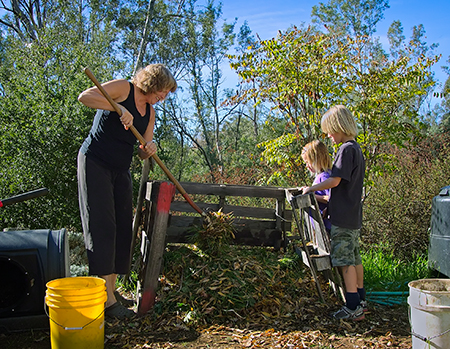Composting is one of the best ways to reuse and recycle waste materials. It has a positive impact on the environment that can go a long way in ensuring a safe place for the next generations to live in.
The benefits of composting are plenty. It improves the condition of the soil helping it to retain moisture and prevent plant diseases as well as pests. As such, it helps plants grow healthy eliminating the need for fertilizers that contain hazardous chemicals.
Another advantage of this is it promotes the production of good bacteria and fungi that help in breaking down organic matter. Additionally, it reduces the amount of waste at the landfill thereby reducing greenhouse gas specifically methane and carbon footprint.
A compost can be made up of most of our household wastes from food scraps to yard waste. These wastes, unknown to some of you, actually contribute 20 to 30 percent of our garbage. So if we make good use of them, we are helping preserve the environment.
What You Can Compost
Basically, composting ingredients should have the browns, greens and water. The browns include branches, dead leaves and twigs while the greens include fruit scraps, vegetable waste, grass clippings and coffee grounds. Water is an important ingredient as it helps moisten the waste materials.
Other wastes you can utilize are nut shells, tea bags, paper, cardboard, eggshells, houseplants, shredded newspaper, fireplace ashes, sawdust as well as hair and fur.
Steps in Composting
The steps to follow are fairly simple. Firstly, pick a dry and shady area in your backyard where you can make your compost pile. Preferably, it should be near a water source. You can use a bin or you can dig a shallow hole there.
Collect your brown and green wastes and add them in there. Just make it a point to shred or chop the large items then moisten the dry materials every time you add them there.
Once you have enough compost, mix the grass clippings and green materials into the pile. Fruit and vegetable scraps should be buried about 10 inches under your compost.
If you want to avoid any unpleasant odor, you can cover your compost using a tarp. This will keep the pile moist.
You would know that your compost is ready to use once it shows a dark and rich color. Normally, this can be achieved from as short as two months to as long as one to two years.
It should also be noted that while composting is often done outdoors, it can be done inside the home. You can use a certain kind of bin which you can purchase at a hardware store or shop that sells gardening tools and supplies. You may cover it as well to ensure that no rodents or pets get inside the container.
Image via ojajgarden
